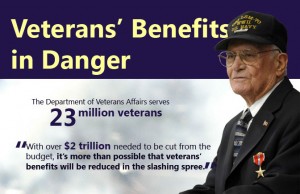Few would disagree that American troops show incredible bravery at war. From World War II to the more recent conflicts in Afghanistan and Iraq, there is no dearth of harrowing accounts from the front lines. But what of those same troops when they return home? The stories often end when their military tour is complete, and suddenly those American heroes are plunged back into civilian life, often with physical and mental wounds that long outlast their service.
The Department of Veterans Affairs, the second largest department in the United States government, was created in 1930 to better address the concerns and needs of these veterans. Known as the VA, the Department operates hundreds of medical centers throughout the country and provides benefits to a population of 23 million veterans. In 2010 the Department occupied approximately 3% of the entire federal budget, and with increasing numbers of veterans requesting federal benefits, this number will likely rise in the future. But with the government tightening its coffers, it is unclear how much will be apportioned to our veterans in the future. Already struggling with accusations of mismanagement and inadequate mental health services, the VA must be prepared to cover a new generation of veterans even without an accompanying rise in funding.
Supporting Our Troops
The VA provides numerous resources to veterans, ranging from help with education to medical care. The programs are largely designed to help accommodate the tough transition many veterans face when returning from war or even dealing with the effects of war later in life. For example, the Veterans Affairs Medical Centers throughout the country provide free healthcare to veterans wounded psychologically or physically overseas. Overall, the VA spends about $50 billion on medical care for veterans, and as long as a veteran can show that his or her problem was incurred during their military history, he or she is eligible to collect disability benefits. Pensions and income assistance are targeted to help those veterans who have difficulty finding an occupation after service or have injuries that leave them unable to work.
One of the more popular programs was introduced through the historic G.I. Bill in 1944. This legislation paid for veterans’ higher education, a program that both encouraged many individuals to enlist and allowed veterans to better reintegrate into the job market. In 2010, educational benefits reached the highest amount ever since the program’s inception.
For some, the VA facilities become a part of their lives for more quotidian reasons. Larry Cooper, a veteran who served as a Petty Officer Second Class with the Coast Guard from 1960 to1964, takes advantage of the gym at his local VA branch. He says that he hasn’t even looked into many of the other benefits that may be available to him.
Navigating the Bureaucracy
Given its ambitious goals, the VA is no smooth operation. Criticism of the VA in the past few years has included inadequate facilities, difficultly obtaining promised services, and a general lack of mental health care for troops.
A recent internal audit of its Regional Disability Compensation Offices found that approximately 23% of disability claims were incorrectly processed. The VA also found that errors incurred processing claims for the most serious disability cases alone could cost the federal government $1.1 billion.
The ultimate cause of many of these errors is likely something the VA has little control over: the sheer scope of the task at hand. One example is the medical benefits given to veterans. Henry J. Aaron of the Brookings Institute pointed out in testimony to the House Committee on Veterans Affairs in 2007 that the Veterans Health Administration, a part of the VA, “faces an unusually difficult challenge—it must deliver an extraordinarily wide range of services to highly diverse populations.” Some are recovering from catastrophic injuries, ranging from spinal cord damage to amputated limbs, while others far more minor concerns.
The fight for appropriate post-traumatic stress disorder care is also frequently at the forefront of veterans’ criticism. Among Vietnam veterans, approximately 30% experienced some form of PTSD following their service. The VA, however, was slow to act on adding PTSD care to its budget, even after greater research in the new millennium allowed for greater treatment of the disorder. Only after significant pressure from the public and numerous advocacy group has the VA begun to make a concerted effort to fund more programs aimed at combating PTSD.
Robert Stevens, director of the City of Cambridge’s Department of Veterans’ Services, is confident in the VA’s mission to help veterans returning from war with PTSD. According to Stevens, the VA is “the premier organization that has the appropriate medial research and models that they apply to our veterans that are coming to us with PTSD.” The current problem, Stevens says, is not a lack of resources on the part of the VA, but rather the stigma attached with seeking care, whether for PTSD or other disabilities.
Future Budget Strains
Of course, all these programs come at a cost. The numerous programs and expanded mental health care will surely increase the strain on future budgets, even as the department grapples with internal troubles. Although projections from the Office of Management and Budget suggest that federal spending on veterans’ benefits will only have moderate increases in coming years, it is 30 years in the future that worry budget experts the most. The U.S. is likely to experience the real cost of the wars in Afghanistan and Iraq in terms of veterans care decades down the road.
But the money covering veterans’ benefits may also fall under greater scrutiny as the government attempts to address calls to slim a ballooning budget. For now, the government’s 2011 debt deal leaves much in doubt for what has often been regarded as a sacred cow of the federal budget. But with over $2 trillion expected to be cut from the budget, it’s more than possible that veterans’ benefits take a hit in the slashing spree.
Design by Melissa Wong
